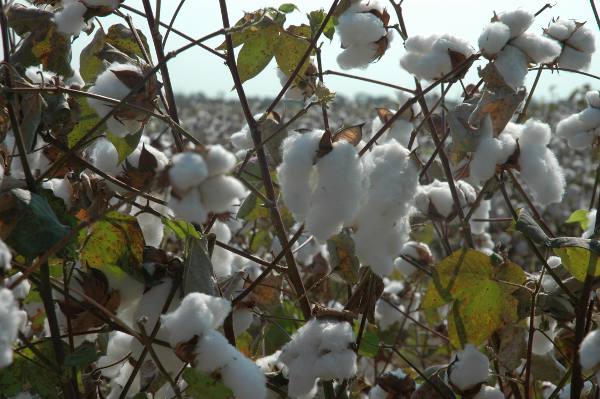
Cotton farmers finishing or going into harvest season with much of the crop un-priced might want to consider either selling quickly or taking some price protection with options contracts.
China’s surplus continues to control the market, says John Robinson, Texas AgriLife Extension economist and cotton marketing specialist.
Robinson says from 50 percent to 60 percent of Texas cotton is likely in the PCCA pool and “will get their price. That’s been the only forward pricing option available.” Growers, some of whom have been stung by lawsuits following the 2011 drought and production shortfall, did not forward price cotton early.
“Be aware of price risks,” he says, “and consider options contracts, puts and put spreads, for instance.”
China may have the equivalent of as many as 40 million bales of cotton in storage, bought at $1.30 to $1.50 a pound in expectation that those high prices would continue. They did not, and China now has a huge surplus that hangs over the market.
If you are enjoying reading this article, please check out Southwest Farm Press Daily and receive the latest news right to your inbox.
“If China dumps it, the market will be down, and they can’t hold all that cotton forever. Eventually it will begin to degrade and the value drops even more.” That surplus has kept cotton in a sideways trading pattern, except for one recent blip above 90 cents.
China may have hoped to see India cotton production fall—if monsoons did not occur—and then sell cotton to India on a rally.
“India had a good monsoon,” Robinson says. So China’s stockpile continues to keep a cap on upward cotton market movements and keeps speculators more than a bit nervous.
“If China does something unexpected, it will hurt the market,” he says.
The risk is on the downside. “Spec funds are not long,” he said, “and if anything causes a downshift—war, China, etc.—we could have a 5-cent to 10-cent-a-pound drop. We see a lot of reason for downshifts and a cap on the upside.”
ICE futures contracts go lower and lower the farther out they go.
“We have a surplus of cotton, and it doesn’t matter where it is, it still weighs on the market. It affects exports.” If China needs cotton they can pull it out of their stockpile.
Robinson says continued downward pressure also may affect acreage for 2014. “If we have 70-cent futures, farmers in the Delta and Southeast may reduce cotton acreage even more. Texas will still be Texas. Farmers in the South may switch some acreage to grain but in the Southern Plains, the insurance advantages will steer farmers to cotton.”
The market, he says, expects Chinese cotton to stay in control. In the meantime, farmers with un-priced cotton should look for ways to protect themselves by selling quickly, or if they decide to hold, by looking at options contracts.
Also of interest:
Cotton market continues sideways pattern
Texas port prepares to serve cotton trade
Cotton Incorporated’s Kater Hake: Reasons for optimism exist for cotton…
About the Author(s)
You May Also Like






